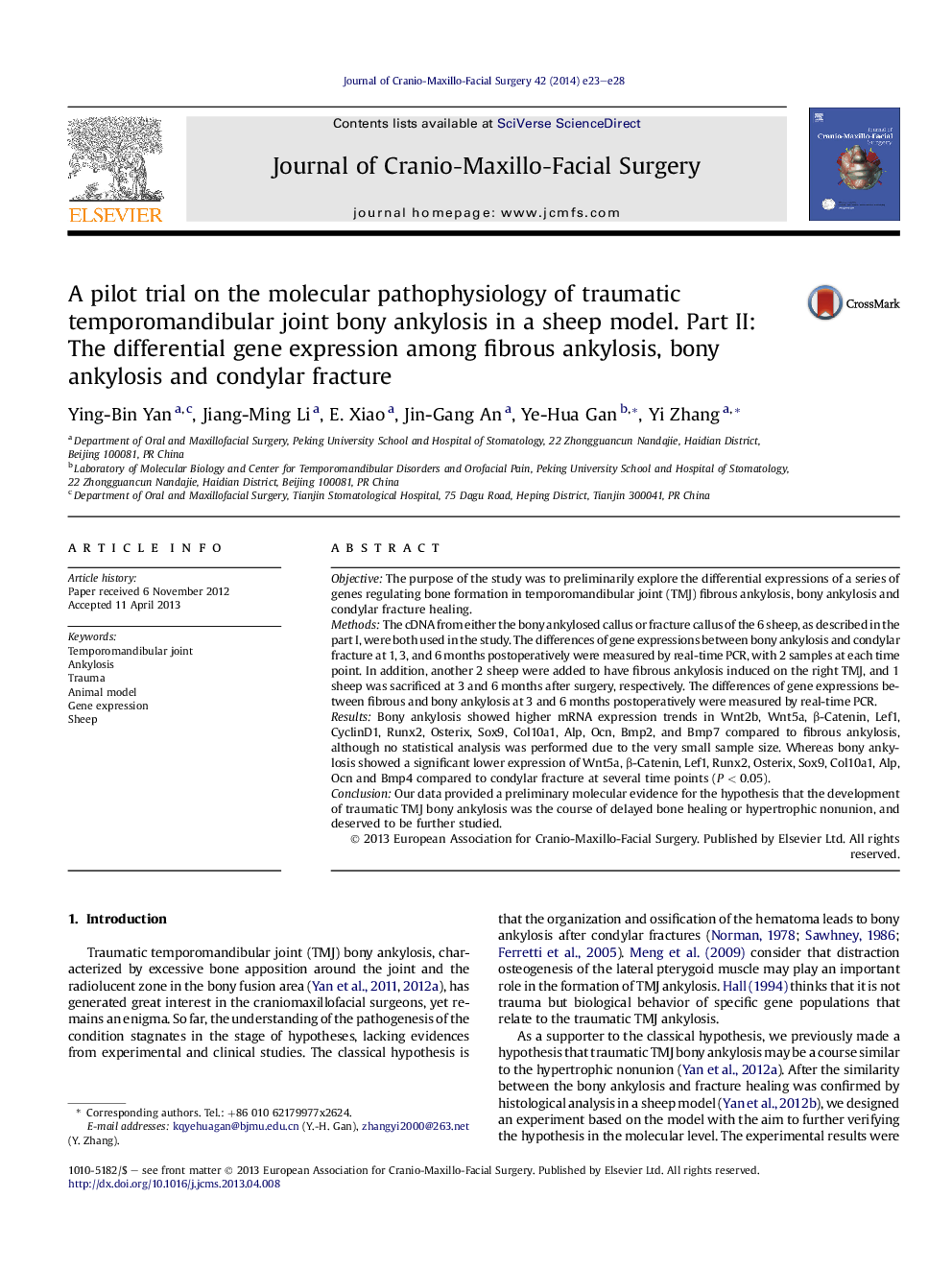| Article ID | Journal | Published Year | Pages | File Type |
|---|---|---|---|---|
| 3142927 | Journal of Cranio-Maxillofacial Surgery | 2014 | 6 Pages |
ObjectiveThe purpose of the study was to preliminarily explore the differential expressions of a series of genes regulating bone formation in temporomandibular joint (TMJ) fibrous ankylosis, bony ankylosis and condylar fracture healing.MethodsThe cDNA from either the bony ankylosed callus or fracture callus of the 6 sheep, as described in the part I, were both used in the study. The differences of gene expressions between bony ankylosis and condylar fracture at 1, 3, and 6 months postoperatively were measured by real-time PCR, with 2 samples at each time point. In addition, another 2 sheep were added to have fibrous ankylosis induced on the right TMJ, and 1 sheep was sacrificed at 3 and 6 months after surgery, respectively. The differences of gene expressions between fibrous and bony ankylosis at 3 and 6 months postoperatively were measured by real-time PCR.ResultsBony ankylosis showed higher mRNA expression trends in Wnt2b, Wnt5a, β-Catenin, Lef1, CyclinD1, Runx2, Osterix, Sox9, Col10a1, Alp, Ocn, Bmp2, and Bmp7 compared to fibrous ankylosis, although no statistical analysis was performed due to the very small sample size. Whereas bony ankylosis showed a significant lower expression of Wnt5a, β-Catenin, Lef1, Runx2, Osterix, Sox9, Col10a1, Alp, Ocn and Bmp4 compared to condylar fracture at several time points (P < 0.05).ConclusionOur data provided a preliminary molecular evidence for the hypothesis that the development of traumatic TMJ bony ankylosis was the course of delayed bone healing or hypertrophic nonunion, and deserved to be further studied.
